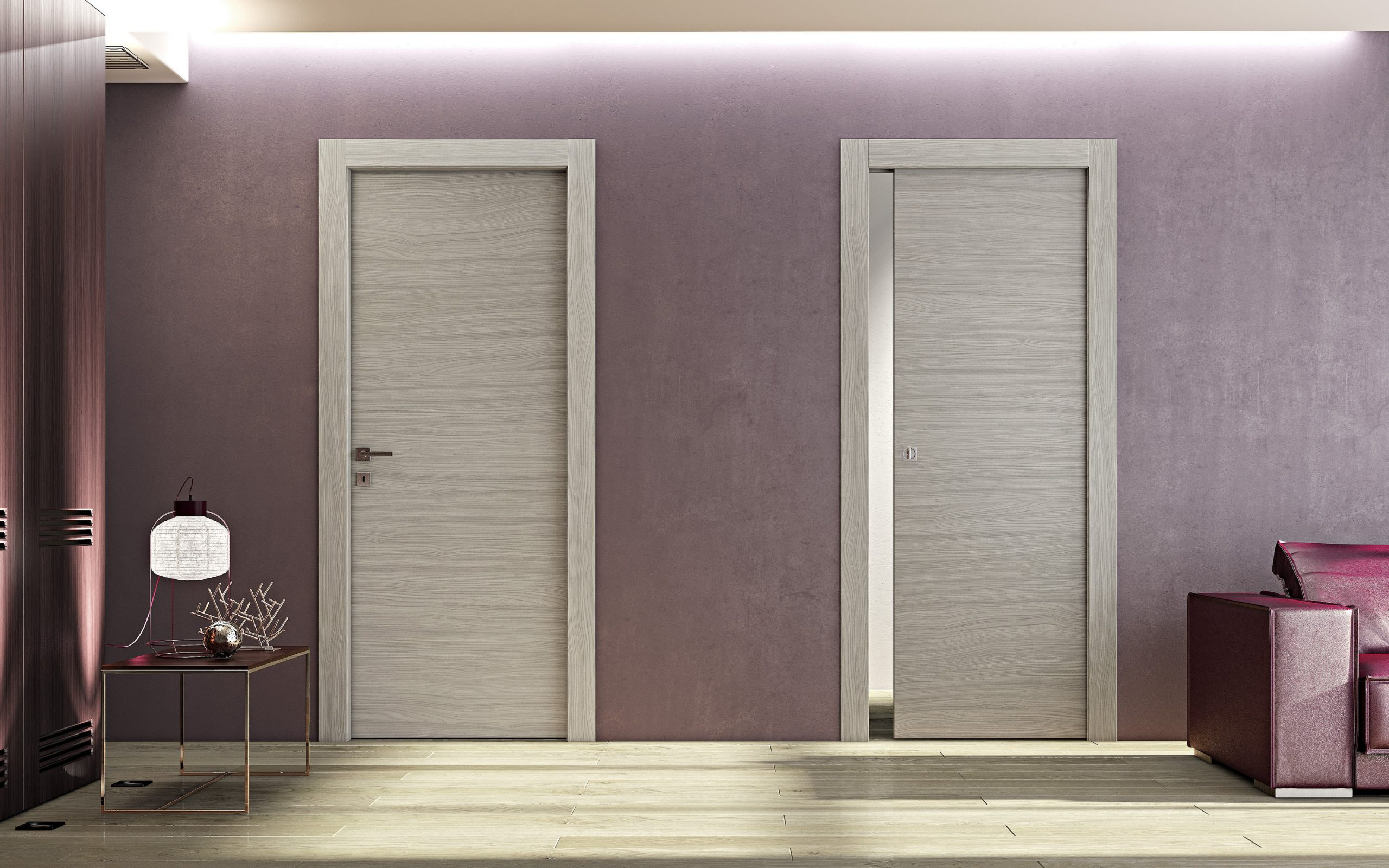How does sliding door work?
How does sliding door work?

Briefly Introduce Sliding Door
Sliding doors are a smart and stylish choice for many homes and businesses. Unlike traditional hinged doors that swing open, a sliding door moves smoothly along a track, saving space and offering a modern look. Whether it’s a patio sliding door, closet sliding door, or even a barn-style sliding door, these doors are loved for their ease of use and sleek design.
Why is sliding Door Popular?
Many homeowners prefer sliding doors because they let in more natural light, especially for patios or large openings. Plus, they create a seamless indoor-outdoor connection, making small spaces feel more significant. In commercial buildings, automatic sliding doors are standard, providing hands-free convenience in places like malls, airports, and office entrances.
How Does a Sliding Door Work?
It’s simpler than you might think! The door glides along a track system guided by rollers or wheels. Instead of swinging open, it moves sideways, making it an excellent choice for tight spaces like small rooms, closets, or hallways. Some models, like pocket sliding doors, even disappear into the wall when opened—perfect for maximizing space.
Proper installation and regular maintenance are key to a smooth-sliding door. Dust and dirt can build up in the tracks, making the door harder to slide. However, with some cleaning and occasional lubrication, a sliding door can last for decades.
Whether upgrading your home with a modern glass sliding door, looking for a space-saving interior door, or thinking about energy-efficient sliding doors with insulated glass, understanding how they work is the first step. Let’s dive deeper into the mechanics behind these doors and what makes them a popular choice.
What Is a Sliding Door?
A Simple Definition
A sliding door is a type of door that moves sideways instead of swinging open like a traditional hinged door. It operates on a track system, allowing it to glide smoothly with minimal effort. Instead of needing extra space to swing open, a sliding door shifts left or right, making it a great space-saving solution for small rooms, narrow hallways, or areas with limited clearance.
The design of a sliding door is simple but effective. It consists of a door panel (or multiple panels) that slides along a track installed at the top, bottom, or both. The door moves using rollers or wheels, which reduce friction and make the movement smooth and effortless. This system is commonly seen in patio sliding doors, closet sliding doors, and even barn doors for interior spaces.
One of the most significant benefits of a sliding door is its efficiency. Since it doesn’t swing open, it keeps walkways clear and makes a room more open. This is why glass sliding doors are so popular for patios and balconies—they provide a seamless connection between indoor and outdoor spaces while letting in plenty of natural light.
One of the most significant benefits of a sliding door is its efficiency. Since it doesn’t swing open, it keeps walkways clear and makes a room more open. This is why glass sliding doors are so popular for patios and balconies—they provide a seamless connection between indoor and outdoor spaces while letting in plenty of natural light.
From residential homes to commercial buildings, sliding doors are used everywhere. Whether it’s an automatic sliding door in a shopping mall or a modern sliding glass door in a home, the simple sliding mechanism makes these doors practical, stylish, and easy to use.
Where Do People Use Sliding Door?
Sliding doors are everywhere! They are for homes, businesses, hotels, and public spaces. Their sleek design, space-saving function, and ease of use make them popular in many places. Let’s look at some of the most common locations where sliding doors are used.
Homes (Patios, Closets, Bathrooms)
Sliding doors are a smart way to save space while adding a modern home touch. One of the most common uses is patio sliding doors. These large glass doors connect indoor and outdoor areas, making a home feel more open and airy. They let in lots of natural light and provide easy access to backyards, decks, or balconies.
Closet sliding doors are also popular inside the house. Instead of swinging outward and taking up floor space, they glide along a track, making them perfect for small bedrooms or hallways. Mirror sliding closet doors are an especially stylish option, as they create the illusion of a bigger room.
In bathrooms, frosted glass sliding doors are often used for shower enclosures. They offer privacy while keeping the space looking sleek and modern. Some homeowners also use pocket sliding doors for bathrooms—these doors slide into the wall when opened, completely disappearing.

Offices and Commercial Spaces
Sliding doors are an excellent fit for modern offices. Many companies use glass sliding doors for conference rooms, private offices, or even as partitions between workspaces. These doors help create an open and bright environment while providing separation when needed.
Automatic sliding doors are a must-have in retail stores. These sensor-activated doors allow customers to enter and exit easily, improving convenience and accessibility. They are also energy-efficient, opening and closing quickly to prevent heat or cool air from escaping.
Folding or telescopic sliding doors are an excellent choice for restaurants and cafes. These doors can open up an entire wall, seamlessly transitioning between indoor and outdoor seating.
Hotels and Luxury Resorts
High-end hotels and resorts often use sliding glass doors to enhance the guest experience. Balcony sliding doors are a standard feature in hotel rooms, offering breathtaking views of the ocean, mountains, or city skyline. These doors allow guests to step outside while enjoying a full view inside their room.
Luxury resorts also use frameless glass sliding doors in their lobbies and spa areas to create an open, sophisticated look. Some even incorporate automatic sliding doors with motion sensors to give guests a touchless, high-end experience.
Inside hotel rooms, bathroom sliding doors of frosted or tinted glass add a stylish, space-saving touch. Many modern hotels also use barn sliding doors for closets and bathrooms, giving the room a trendy yet functional design.
Public Buildings and Transport
Public places need doors that are efficient, safe, and accessible—this is why automatic sliding doors are commonly found in airports, train stations, and hospitals. These doors allow people to move in and out quickly, reducing congestion in high-traffic areas.
Sensor-controlled sliding doors are installed at entrances, terminals, and boarding areas at airports to facilitate seamless passenger movement. In train and subway stations, platform sliding doors enhance safety by keeping people away from the tracks until the train arrives.
Hospitals also rely on sliding doors for their convenience and hygiene benefits. Automatic sliding doors allow stretchers and wheelchairs to pass quickly, while hermetic sliding doors help maintain sterile environments in operating rooms.
Even government buildings, libraries, and shopping malls use glass sliding doors to provide a welcoming and accessible entrance for visitors.
Summary
Sliding doors are everywhere, From homes to offices to hotels and public spaces. Their modern design, space-saving function, and ease of use make them a top choice for residential and commercial spaces. Whether it’s a patio sliding door that brings in sunlight, a glass office door that creates a sleek workspace, or an automatic door that improves accessibility, sliding doors are stylish and practical.
How Does a Sliding Door Work?
A sliding door works differently from a regular door. Instead of swinging open on hinges, it glides smoothly along a track. This simple yet clever mechanism makes sliding doors great for saving space, adding style, and improving accessibility. Let’s break down the key parts that make a sliding door work.
The Basic Mechanism
A sliding door system has four main components:
- Track System: Guides the door’s movement.
- Rollers or Wheels: Help the door glide effortlessly.
- Frame & Panels: Provide structure and style.
- Handles & Locks: Add convenience and security.
Track System – Guides the Door’s Movement
The track system is the backbone of any sliding door. It creates the path that the door follows when opening and closing. The track can be installed in different ways, depending on the type of sliding door:
- Top-mounted Track: The door hangs from a rail at the top, often used for barn sliding doors and pocket sliding doors.
- Bottom-rolling Track: This type of door moves on wheels along a lower track, which is common for patio sliding doors and glass sliding doors.
- Dual-track System: Used to bypass sliding doors, allowing two doors to slide past each other.
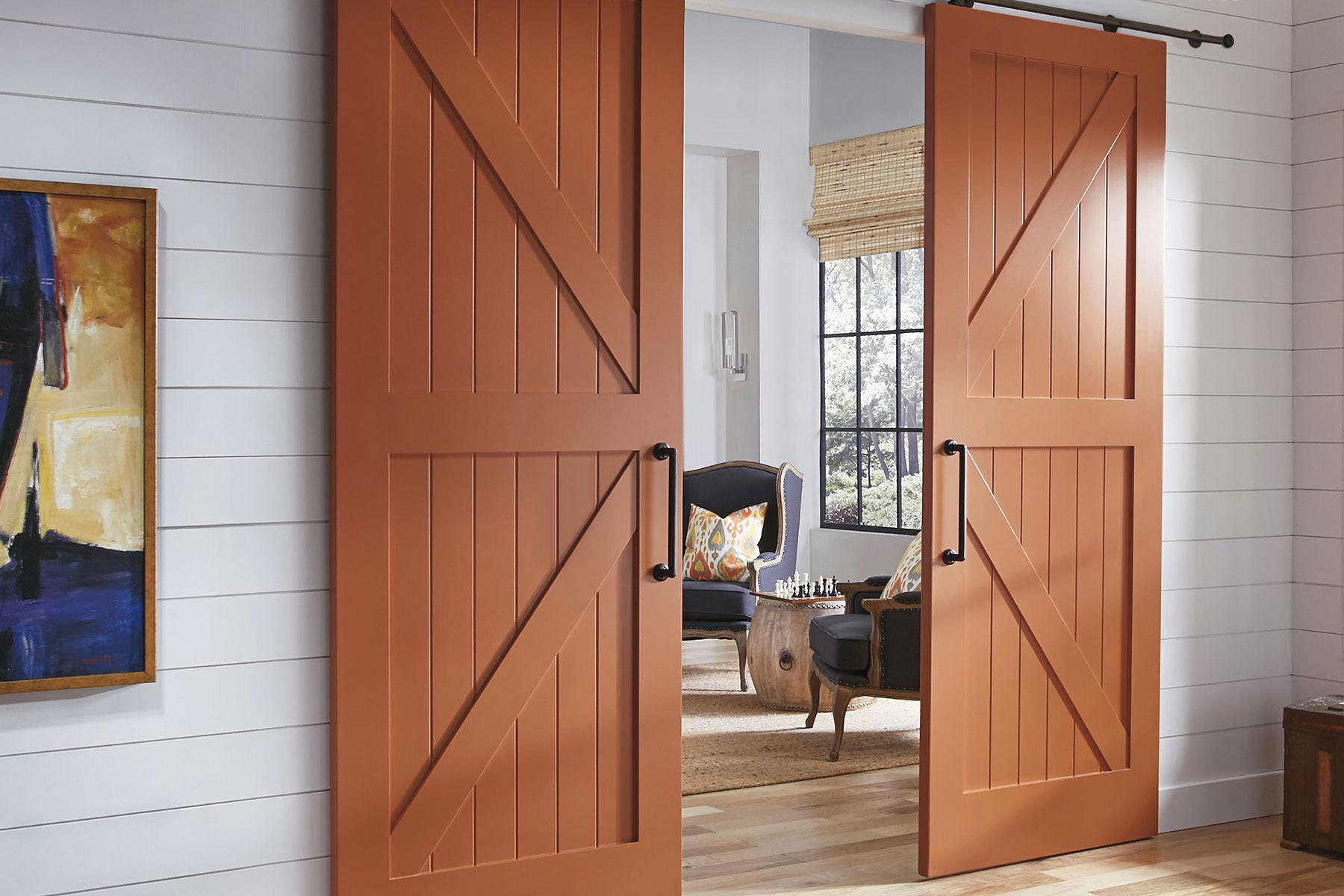
Rollers or Wheels – Helps the Door Glide Smoothly
Rollers or wheels are what make a sliding door move effortlessly. These small but essential parts are attached to the bottom or top of the door, allowing it to glide along the track with little resistance.
Different types of rollers and wheels affect how smoothly the sliding door operates:
- Ball-bearing Rollers: Provide a super-smooth and quiet glide, often used in high-end sliding doors.
- Plastic or Nylon Wheels: More affordable and lightweight, but may wear out faster.
- Metal Rollers: Strong and long-lasting but can be a bit noisier.
Frame & Panels – Holds the Glass, Wood, or Metal
The frame and panels give a sliding door its structure and appearance. The frame holds the door together, while the panels provide the door’s main surface. Depending on the style and function, sliding doors come in a variety of materials:
- Glass Sliding Doors: Popular for patios, offices, and modern interiors. They maximize natural light and create a sleek, open feel.
- Wood Sliding Doors: Often used for barn and closet doors, bringing a warm and rustic touch to a space.
- Aluminum or Metal Sliding Doors: Lightweight and durable, commonly found in commercial buildings and high-traffic areas.
- Vinyl or Fiberglass Sliding Doors: Energy-efficient and weather-resistant, great for patio sliding doors in all climates.
Handles & Locks – Ensures Security and Convenience
The handle and lock system on a sliding door make it easy to use while keeping it secure. Unlike traditional doors, sliding doors require special locking mechanisms to prevent them from being forced open.
Some common sliding door lock types include:
- Mortise Locks: Installed inside the door frame, providing a secure and sleek locking option.
- Hook Locks: A hook-shaped latch that secures the door when locked, commonly used for patio sliding doors.
- Two-point or Three-point Locks: Offer extra security by locking the door at multiple points along the frame.
- Keyed Locks: Ideal for exterior sliding doors for added protection.
- Smart Locks: Allow keyless entry with a code, fingerprint, or smartphone app.
- Sliding Door Security Bars: A simple but effective way to block forced entry.
Summary
A sliding door may look simple, but its mechanism is well-designed for smooth and efficient movement. The track system, rollers, frame, and locks all work together to create a door that is easy to use, stylish, and practical.
Whether you have a patio sliding door, barn door, or pocket sliding door, understanding how these parts work can help you choose the right door, maintain it properly, and enjoy its benefits for years.
Types of Sliding Door Mechanisms
Not all sliding doors work the same way. Different mechanisms affect how smoothly the door glides, how many panels can move, and how much space is needed. Understanding these options can help you choose the right sliding door for your home or business.
Single Track vs. Multi-Track
One of the most significant differences between sliding door systems is whether they use single or multiple tracks.
- Single-track sliding doors have just one rail, meaning the door panel slides back and forth along that single path. This is common in patio sliding, barn, and pocket doors, where only one panel moves.
- Multi-track sliding doors have two or more parallel tracks, allowing multiple panels to slide independently. This is popular in large glass sliding doors for patios, where panels can stack together to open up wide spaces.
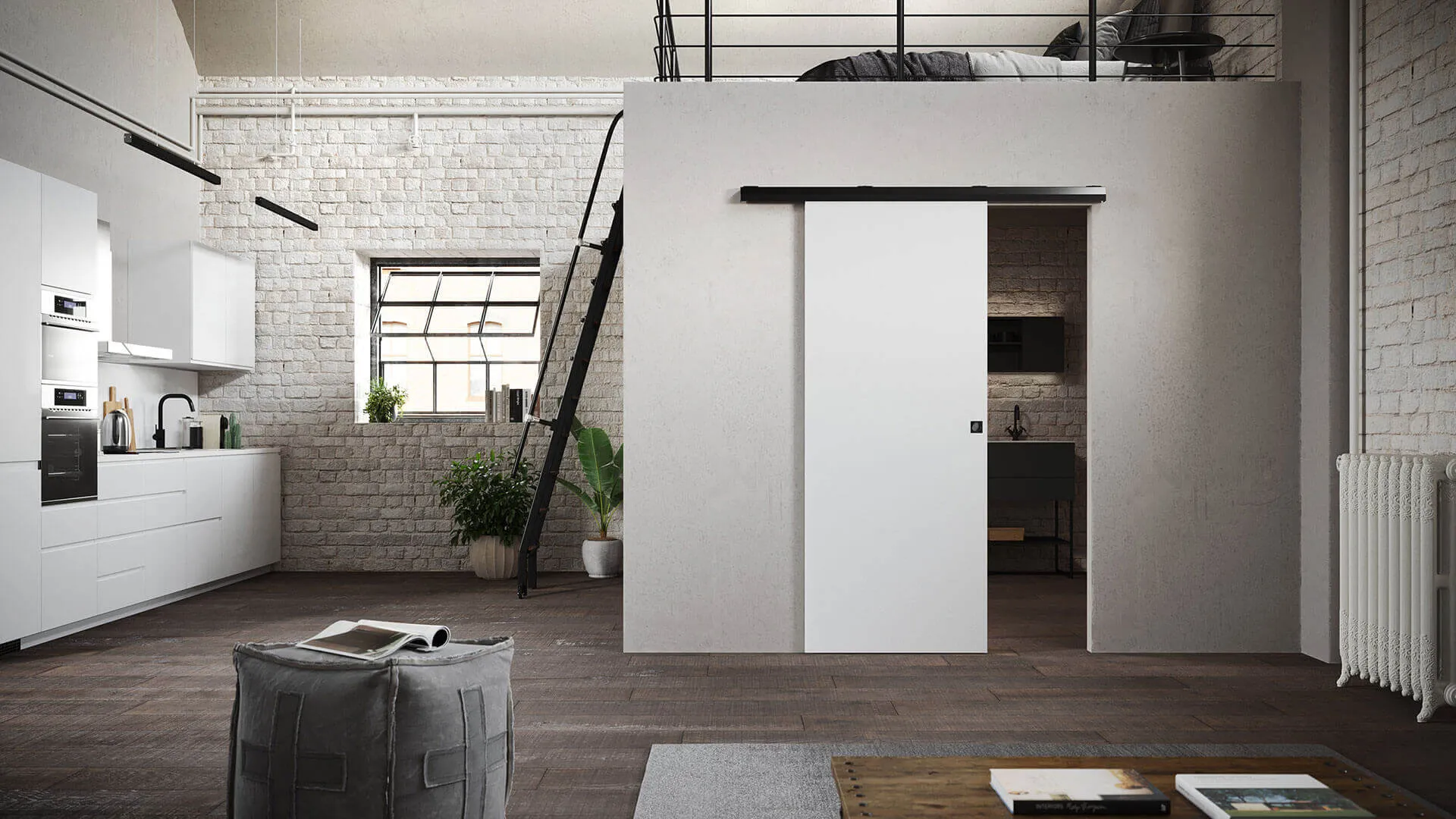
Top-Hung vs. Bottom-Rolling
Another key difference in sliding door design is whether the door is suspended from the top or supported from the bottom.
Top-Hung Sliding Doors
A top-hung sliding door is attached to an overhead track, meaning the door panel hangs from above. It moves using rollers fixed to the top, keeping the bottom clear. This type is often used for barn, pocket, and frameless glass sliding doors.
Pros:
- Creates a clean, modern look with no track on the floor.
- Works well for indoor sliding doors like bathrooms and closets.
- Reduces the risk of dust or debris clogging the track.
Cons:
- Needs an intense support beam above the door.
- Heavy doors (like large glass panels) may require reinforced installation.
Bottom-Rolling Sliding Doors
A bottom-rolling sliding door moves on wheels attached to the floor track, making it a better choice for heavier panels. This is common for patio sliding doors, large glass sliding doors, and commercial sliding doors.
Pros:
- Supports heavier glass or metal sliding doors.
- It is easier to install because it doesn’t need strong overhead support.
- Works well for wide openings and exterior doors.
Cons:
- The bottom track can collect dust and dirt, requiring regular cleaning.
- If not installed properly, the rollers may wear out over time.
Soft-Close Mechanism – No More Slamming
Have you ever had a sliding door slam shut unexpectedly? That’s where a soft-close mechanism comes in.
A soft-close sliding door has built-in dampers that slow down the door before it reaches the end of the track. Instead of slamming shut, it gently glides into place, preventing noise and damage.
Why Choose Soft-Close Sliding Doors?
- Prevents Damage: No more banging against the frame.
- Safer for Kids and Pets: No risk of fingers getting pinched.
- Feels More Luxurious: Adds a smooth, high-end touch to your home.
Summary
Choosing the proper sliding door mechanism significantly affects functionality, durability, and user experience.
- Single-track sliding doors are simple and space-saving, while multi-track doors allow a more open, flexible design.
- Top-hung sliding doors create a clean, modern look while bottom-rolling sliding doors support heavier panels.
- A soft-close mechanism adds a premium feel, prevents slamming, and improves safety.
Different Types of Sliding Door
Sliding doors come in many styles, each designed for a specific purpose. Whether you’re looking to open up a patio, save space in a small room, or add a rustic touch to your home, there’s a sliding door for every need. Here are some popular sliding door designs and where they work best.
Traditional & Popular Designs
Patio Sliding Door
A patio sliding door is one of the most common types of sliding doors. These doors usually have large glass panels, offering clear outdoor views and letting in plenty of natural light. They are perfect for balconies, decks, gardens, and backyard patios, making your indoor space feel bigger and more connected to the outside.
Most sliding patio doors have two panels, one fixed in place and the other sliding open. However, some designs include multi-panel or bi-fold sliding doors, which fold away to open up a space completely. Double-glazed or energy-efficient glass is often used to improve insulation and reduce noise.
A glass sliding patio door is a must-have if you love indoor-outdoor living. It makes entertaining guests easier, provides a seamless transition to outdoor spaces, and adds a modern, elegant touch to any home.
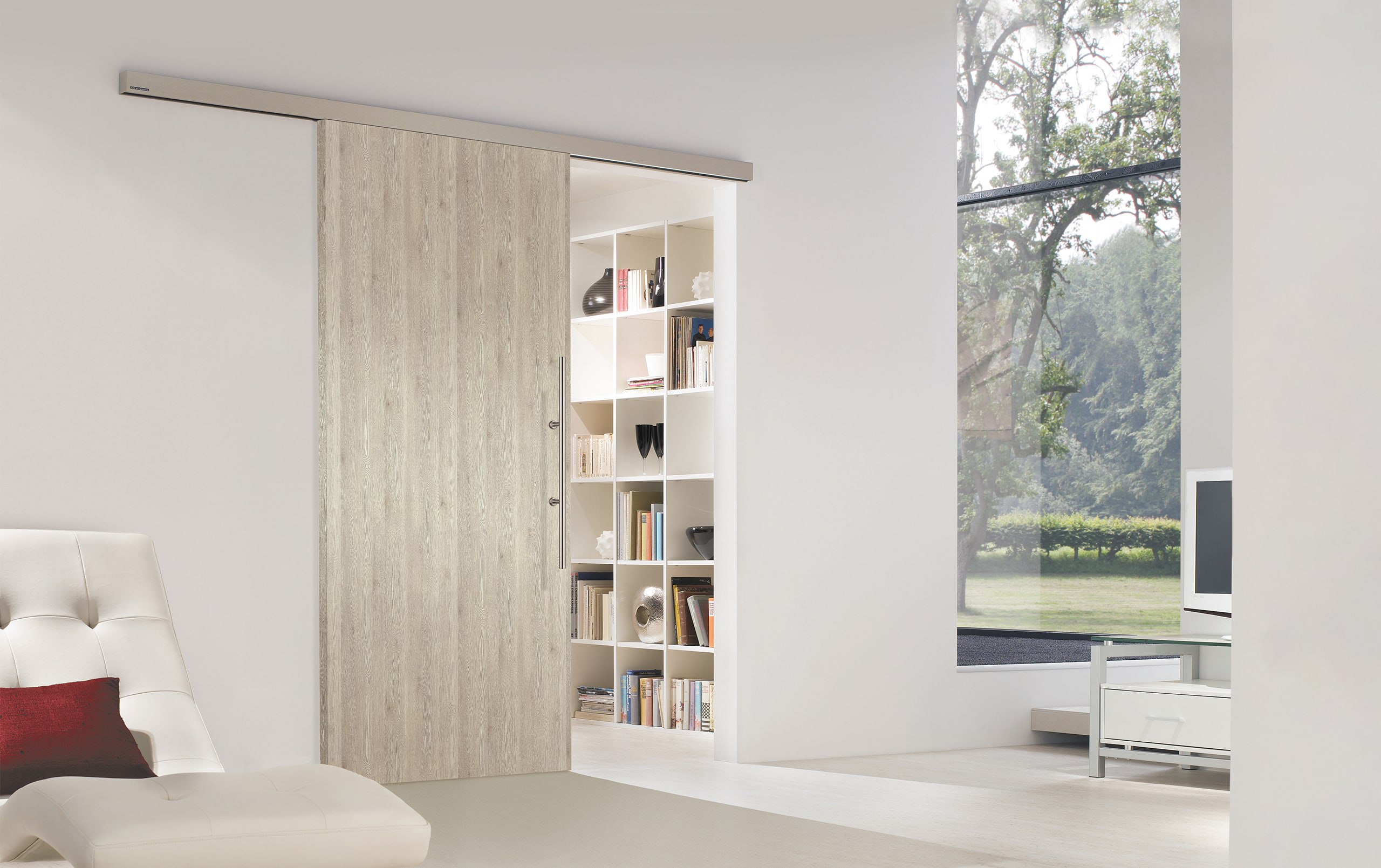
Barn Sliding Door
A barn sliding door brings rustic charm and a touch of farmhouse style to interior spaces. Instead of being hidden inside a wall, these doors slide along an exposed rail system, making them a great decor feature and a functional door.
Barn-style sliding doors are commonly used for bedrooms, bathrooms, closets, and home offices. They add a unique look while saving space since they don’t swing open like traditional doors. Many homeowners choose wooden barn doors for their warm, natural feel, but metal and glass versions are also available for a more modern look.
One of the best things about a barn sliding door is its versatility. Whether your home has a farmhouse, industrial, or minimalist design, a custom barn door can be designed to match your style.
Pocket Sliding Door
A pocket sliding door is the ultimate space-saving solution. Unlike regular sliding doors that move along a track, pocket doors slide into a hidden compartment inside the wall. When fully open, they disappear entirely, making them perfect for small rooms, bathrooms, and closets where every inch of space matters.
Many homeowners install pocket sliding doors in modern homes, apartments, and tiny houses to create a clean, open look without bulky doors getting in the way. They are also great for home offices and ensuite bathrooms, where privacy is needed but space is limited.
Since pocket doors require a built-in cavity inside the wall, installation can be more complex. However, the sleek and seamless result is worth it for those seeking a minimalist and space-efficient door solution.
Bypass Sliding Door
A bypass sliding door is the go-to for closets, cabinets, and storage spaces. Unlike other sliding doors that move along a single track, bypass doors have two or more panels that slide past each other on parallel tracks. This allows you to open one side of the closet while the other remains closed.
Bypass sliding doors are popular in bedrooms, hallways, and laundry rooms, where swinging doors would take up too much space. They are also commonly used for kitchen pantries and built-in shelving units, keeping storage areas accessible without blocking walkways.
Most closet bypass sliding doors are made of wood, mirrored, or frosted glass. Mirrored bypass doors are especially popular because they hide storage while making a room feel brighter and bigger.
Summary
Choosing the right sliding door depends on your space, style, and needs. Patio sliding doors bring in natural light and outdoor views; barn sliding doors add rustic charm; pocket sliding doors maximize space by disappearing into the wall; and bypass sliding doors are perfect for closets and storage.
No matter which type you choose, a sliding door is an innovative, stylish, and practical way to improve your home’s design and functionality!
Modern & High-Tech Sliding Door
Sliding doors have come far from simple wood or glass panels on a track. Modern sliding doors combine technology, sleek design, and innovative features to improve convenience, security, and aesthetics. Whether in homes, offices, or commercial spaces, these advanced sliding doors add a high-end, futuristic feel.
Let’s look at three of the most popular high-tech sliding doors on the market today.
Automatic Sliding Door
If you’ve ever walked into a shopping mall, office building, or airport, you’ve probably used an automatic sliding door. These doors use motion sensors to detect movement, allowing them to open hands-free. They are perfect for high-traffic areas where people are constantly coming and going.
Why Choose an Automatic Sliding Door?
- Convenience: No need to push or pull, walk through.
- Accessibility: Ideal for wheelchair users, older adults, and those carrying heavy bags.
- Energy Efficiency: Opens only when needed, helping to reduce heating and cooling loss.
- Hygienic: No contact required, making them perfect for hospitals and public buildings.
Frameless Glass Sliding Door
A frameless glass sliding door is all about minimalism and elegance. Unlike traditional glass sliding doors, these have no bulky frames, creating a clean, seamless look. They are popular in modern homes, offices, luxury hotels, and showrooms.
Benefits of Frameless Glass Sliding Door
- Ultra-modern Design: Gives a sleek, high-end look to any space.
- Maximizes Natural Light: Creates a bright and open atmosphere.
- Creates a Smooth Indoor-outdoor flow: Perfect for balconies, patios, and pool areas.
- Works for Residential and Commercial Spaces: Great for conference rooms, offices, and storefronts.
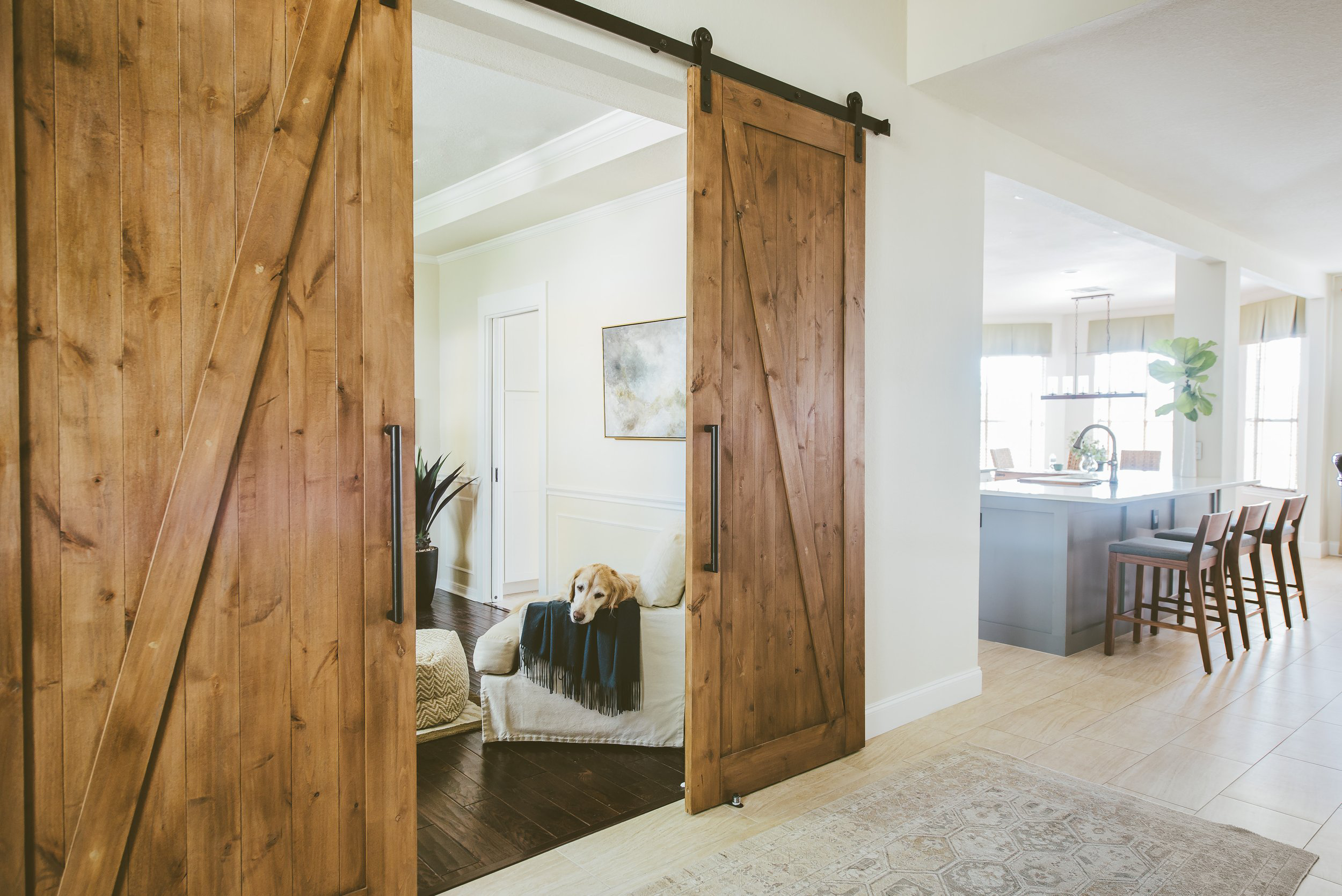
Intelligent Sliding Door
Imagine a sliding door that opens when you walk toward it, locks automatically when you leave, and even responds to voice commands. Bright sliding doors are the future of home automation, offering high-tech convenience and security.
What Can a Intelligent Sliding Door Do?
- Hands-free Operation: You can control the door using motion sensors, remote controls, or voice assistants like Alexa or Google Home.
- Keyless Entry: You can lock and unlock your door using fingerprint scanning, PIN codes, or smartphone apps.
- Security Integration: Connects with smart locks, alarms, and surveillance systems for extra protection.
- Energy Efficiency: Some bright sliding doors adjust automatically based on weather conditions or room temperature.
Summary
If you’re looking for high-tech and stylish sliding doors, there are plenty of options:
- Automatic sliding doors for commercial buildings and public spaces provide hands-free convenience.
- Frameless glass sliding doors for a minimalist, elegant look in homes, offices, and hotels.
- Bright sliding doors that connect to home automation systems for added security and modern functionality.
Advantages & Disadvantages of Sliding Door
Why People Love Sliding Door?
Sliding doors are a popular choice for homes and businesses. They are more than just functional—they bring style, convenience, and efficiency to any space. Whether it’s a patio sliding door, a closet sliding door, or a modern glass sliding door, these doors offer several advantages that make them stand out.
Space-Saving Solution
One of the biggest reasons people choose a sliding door is its space-saving design. Unlike traditional hinged doors that need extra room to swing open, a sliding door moves side to side along a track, making it perfect for tight spaces.
- Great for Small Rooms: No need to worry about door clearance.
- Ideal for Closets and Pantries: Bypass sliding doors keep storage areas accessible without blocking walkways.
- Perfect for Apartments: Maximizes space while keeping a modern feel.
Enhances Natural Light
If you want more sunlight in your home, a glass sliding door is the perfect solution. Sliding patio doors and frameless glass sliding doors allow natural light to flood in, making any space brighter and more open.
- Reduces the Need for Artificial Lighting: Saves energy during the day.
- Creates a Seamless Indoor-outdoor Flow: Perfect for patios, balconies, and gardens.
- Makes Rooms Feel Bigger: More light gives an illusion of extra space.
Easy to Operate
Unlike some traditional doors, which can be heavy or hard to open, a sliding door glides effortlessly along its track. Its high-quality rollers and smooth tracks make it easy for anyone to use, including kids and elderly family members.
- No Heavy Pushing or Pulling: Just a gentle slide is enough.
- Soft-close Options: Prevents doors from slamming shut.
- Automatic Sliding Doors: Perfect for commercial spaces, offering hands-free access.
Modern and Stylish Look
A sliding door isn’t just functional—it’s a design statement. Whether you choose a rustic barn sliding door, a sleek glass sliding door, or a minimalist pocket door, it adds a touch of elegance to any space.
- Perfect for Contemporary Homes: Clean lines and smooth movement.
- Great for Open Floor Plans: Helps divide spaces without making rooms feel closed off.
- Fits Any Style: Available in wood, metal, glass, and more.
Summary
A sliding door is more than just a door—it’s an innovative, stylish, and space-saving solution. Whether upgrading your home or designing a modern office, a sliding door offers convenience, beauty, and efficiency all in one. If you love bright spaces, easy access, and sleek designs, a sliding door is worth considering!
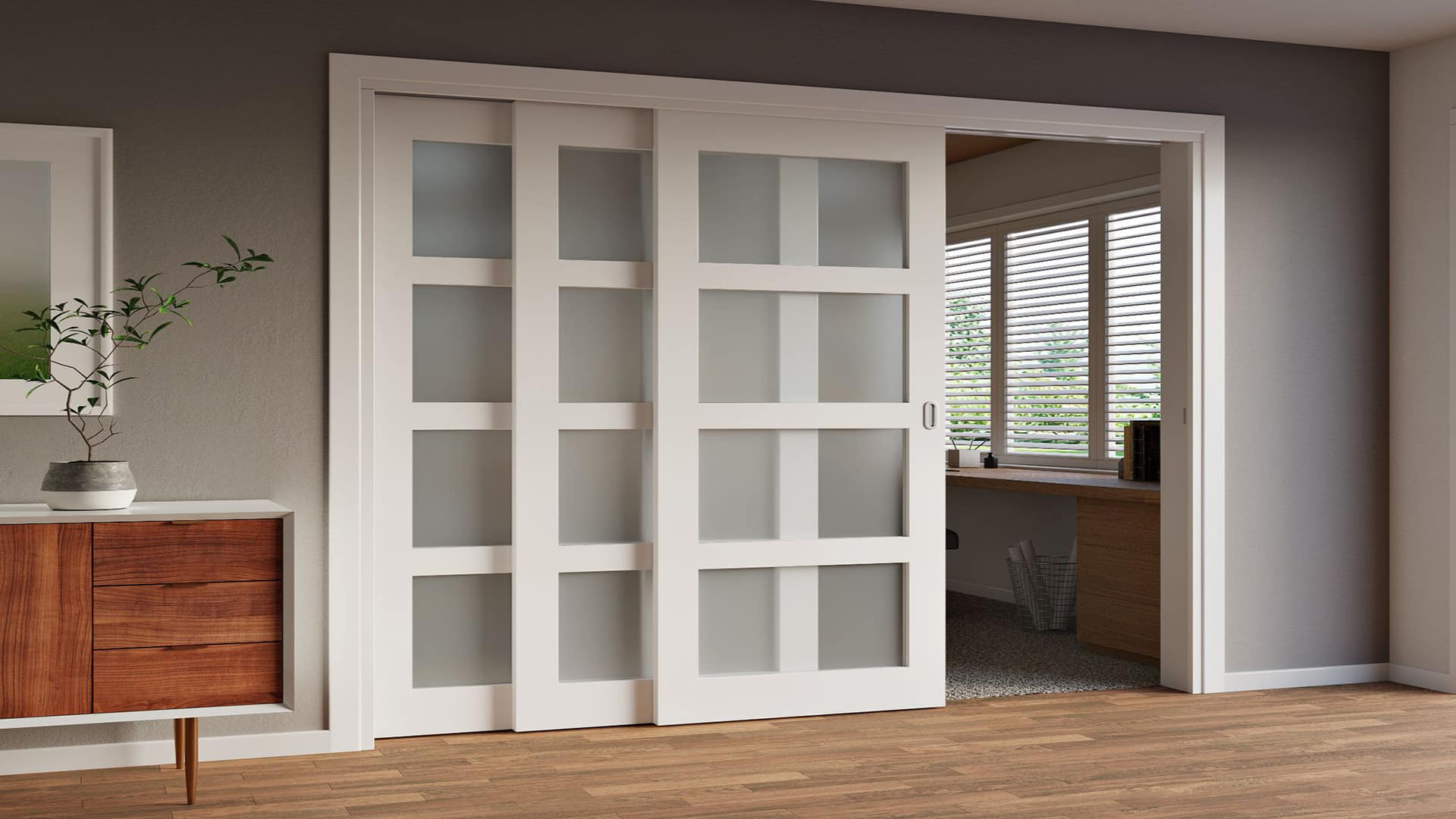
Common Drawbacks to Consider
While sliding doors offer many benefits, they are not perfect. Like any door system, they have some downsides that homeowners should be aware of. Let’s look at a few common challenges and how to deal with them.
Can Be Harder to Seal for Insulation
Insulation is one of the biggest concerns with a sliding door, especially a glass sliding door. Unlike hinged doors that fit snugly into a frame, sliding doors have small gaps along the track where air can leak in or out.
Potential Issues:
- Heat Loss in Winter: Cold air can seep in, making your home less energy-efficient.
- Heat Gain in Summer: Sunlight passing through glass sliding doors can warm the interior.
- Wind and Dust: Small gaps may allow drafts and debris to enter.
- Use double-glazed or energy-efficient glass to reduce temperature transfer.
- Install weatherstripping along the edges of the sliding door.
- Choose a thermal break aluminum frame for better insulation.
Requires Regular Track Cleaning
A sliding door moves along a track system, which means dust, dirt, and debris can build up over time. If not cleaned, this can cause the door to stick, grind, or become difficult to slide.
Common Problems:
- Dirt and pet hair clog the track, making moving the door more challenging.
- Small rocks or debris damage the rollers, leading to uneven sliding.
- Mold or mildew in damp areas, especially on patio sliding doors exposed to rain.
- Vacuum the track every few weeks to remove dust and dirt.
- Wipe the track with a damp cloth and mild detergent.
- Apply silicone spray lubricant to keep the rollers moving smoothly.
May Need High-Quality Rollers for Longevity
A sliding door relies on rollers or wheels to move smoothly. If these rollers wear out or become misaligned, the door can become hard to slide or even get stuck.
Signs of Roller Problems:
- The door feels heavy and doesn’t slide easily.
- You hear grinding or squeaking noises when opening or closing the door.
- The door jumps off the track or doesn’t align properly.
- Choose high-quality ball-bearing rollers for smoother and longer-lasting movement.
- If the rollers are worn out, replace them instead of forcing the door to slide.
- Keep the rollers lubricated to reduce friction and wear.
Summary
While sliding doors are stylish and practical, they do require some maintenance. For long-term durability, they may require better insulation, regular track cleaning, and quality rollers.
With the right materials and care, a sliding door can remain smooth, efficient, and beautiful for years. If you’re considering one, just make sure to choose high-quality components and keep up with maintenance to keep it working perfectly!
How to Maintain a Sliding Door for Smooth Operation?
Keeping your sliding door in top shape isn’t hard but requires regular maintenance. Over time, dirt, dust, and grime can build up in the tracks, making the door hard to open and close. Plus, the rollers can start sticking without the proper lubrication, which leads to jerky movement. The good news? A little cleaning and the appropriate lubricant can keep your sliding glass, patio, or barn-style sliding door gliding smoothly.
Cleaning & Lubrication Tips
1. Keep the Tracks Clean
One of the biggest reasons a sliding door gets stuck is dirty tracks. Dust, pet hair, and even small debris can collect over time, creating resistance. Here’s what to do:
- Use a vacuum with a nozzle attachment to suck up loose dirt.
- Wipe down the tracks with a damp cloth or sponge to remove stubborn grime.
- Use a toothbrush or a small brush to scrub away dirt from the corners for tougher buildup.
- Dry the tracks completely before applying any lubricant.
2. Use the Right Lubricant
Not all lubricants work well for sliding doors. Some, like WD-40, seem like a good option, but they can attract more dirt over time. Instead, go for silicone spray lubricant. It’s lightweight, doesn’t leave a greasy residue, and helps the door glide smoothly.
Fixing Common Sliding Door Issues
Sticking or Stiff Door?
If your sliding door feels stuck or takes too much effort to move, the first thing to check is the track. Dirt, dust, and small debris can build up, making it harder for the rollers to glide smoothly.
Here’s how to fix it:
- Start by vacuuming the track to remove loose dust and dirt.
- Use a damp cloth or sponge to wipe away grime. If needed, use a brush to scrub stubborn spots.
- Dry the track completely, then apply a silicone-based lubricant to help the door slide effortlessly.
Sticking or Stiff Door?
The rollers make your sliding door glide smoothly. If they get stuck or worn out, the door won’t move properly. You might notice grinding noises, uneven sliding, or the door coming off track.
Try these steps:
- First, lift the door slightly and check if the rollers are dirty. Wipe them clean.
- If the door still sticks, locate the adjustment screws—usually at the bottom or sides of the door.Turn them with a screwdriver to raise or lower the rollers.
- If the rollers are cracked or damaged, it’s time for a replacement. To do so, you’ll need to remove the door from the frame, unscrew the old rollers, and install new ones.
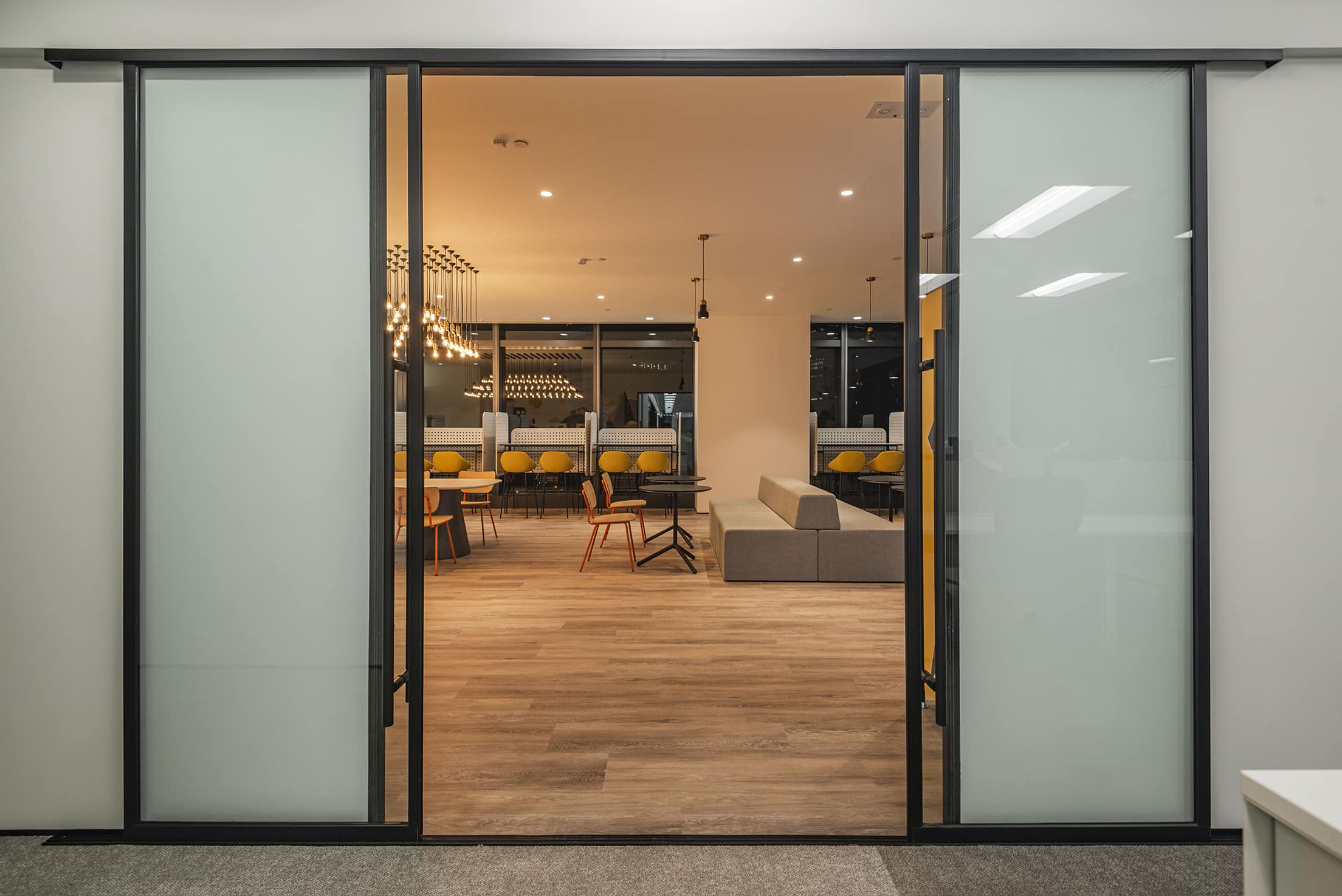
Draft or Leaks?
Feeling a breeze near your sliding door when it’s closed? That’s a sign of gaps or worn-out seals. Over time, weather stripping can wear down, letting in cold air, dust, and even bugs.
To fix drafts:
- Inspect the weather stripping along the edges of the door. If it looks cracked or loose, replace it.
- Use foam or rubber weather stripping for a snug fit. Peel and stick it along the frame.
- Check the door’s alignment—if it’s off-track, it might not seal properly. Adjust the rollers if needed.
Relate FAQ
How does a sliding door work?
A sliding door moves horizontally along a track instead of swinging open like traditional hinged doors. It consists of panels that glide smoothly on rollers or a rail system, making it an efficient space-saving solution.
What are the main components of a sliding door?
- Door Panels: The movable sections of the door.
- Tracks/Rails: The guiding system along which the door slides.
- Rollers/Wheels: Mechanisms attached to the panels for smooth movement.
- Handles & Locks: For operation and security.
- Soft-Close or Stopper Mechanisms: For controlled movement and safety.
What types of sliding doors are available?
- Bypass Sliding Doors: Panels slide past each other, which is common in closets.
- Pocket Doors: Slide into a hidden compartment in the wall.
- Barn Doors: Mounted on an exterior track for a rustic look.
- Bi-Fold Sliding Doors: Fold while sliding, used for wider openings.
- Automatic Sliding Doors: Sensor-operated, often seen in commercial spaces.
Are sliding doors energy efficient?
Sliding doors with insulated glass, weather stripping, and thermal barriers help reduce heat loss and improve energy efficiency. Double-glazed or Low-E glass options further enhance insulation.
What are the benefits of a sliding door?
- Space-saving: No need for swing clearance.
- Natural Light: Large glass panels allow more sunlight.
- Aesthetic Appeal: Modern and sleek design.
- Easy Access: Smooth operation for effortless opening.
- Indoor-Outdoor Connection: Great for patios and balconies.
How do you maintain a sliding door?
- Clean the tracks regularly to remove dirt and debris.
- Lubricate the rollers for smooth operation.
- Check weather stripping to ensure energy efficiency.
- Tighten screws and adjust the alignment to prevent sticking.
Share This Story, Choose Your Platform!
Send Us A Message
*100% Privacy Guaranteed


